Absolutely wild landscapes – but also dramatically bad roads! That’s perhaps how you could sum up the North Coast 500. In the far north-west of Scotland, beauty has to be worked hard for…
Page Contents (click line to jump the text)
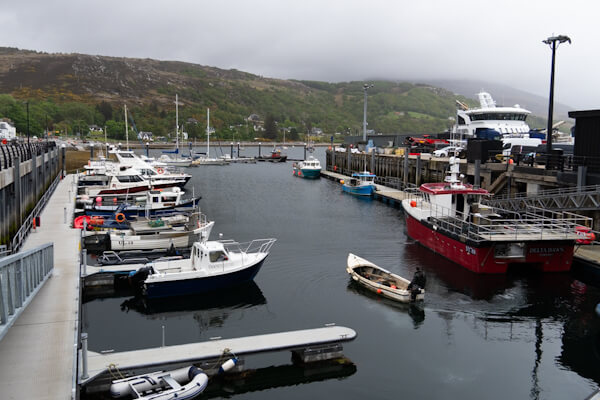
Intro and travel report
I didn’t remember the NC500 being that bad. I had driven it a few years ago on my motorbike. The weather was wet and cold at the time, and I could only drive slowly because constant drizzle on my helmet visor and constant moisture inside the visor made it difficult to see.
What I know now is that even under ideal conditions, I wouldn’t have been able to drive very fast because the roads in north-west Scotland are in some cases in a frighteningly poor condition. They are almost always narrow here, but for the most part they are also single-lane.
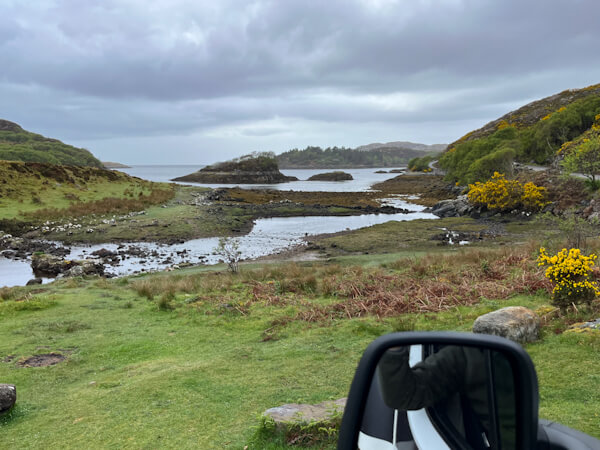
I didn’t really notice this as a problem on the motorbike, because even with oncoming traffic, there is often still enough space for a motorbike on a narrow or even single-lane road, so I didn’t have to stop constantly. The road conditions were probably also better then than they are today.
Today, things are very different with our (somewhat oversized) motorhome: we struggle through the north-western Highlands from passing place to passing place in stop-and-go traffic. Often there are no passing places for long stretches, or they are far too short for a motorhome.
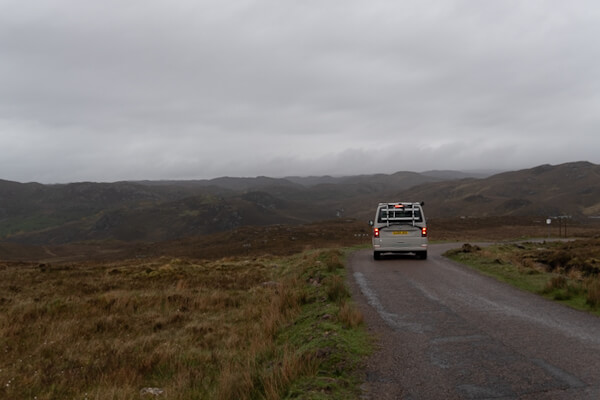
I stare intently ahead and try to estimate how many bays we can skip – one, two, three, oncoming traffic.
We didn’t realise this beforehand, and neither did many others, because we keep encountering motorhomes in the same situation. Little space and always tight…
Well, I had to get that off my chest, because the stress of driving needs an outlet!
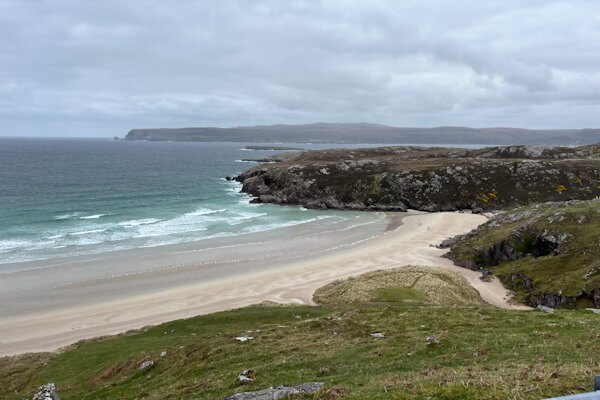
To be fair, I should add that there were signs for some sections of the route indicating that the road was not suitable for heavy goods vehicles and vehicles over 8 metres long. Our vehicle is just under 8 metres long, but certainly 2 metres too long and much too wide.
In a nutshell: motorcycles have no major difficulties here, and the route is feasible for cars and smaller VW camper vans (but not enjoyable). I cannot recommend the NC500 for motorhomes at all!!!
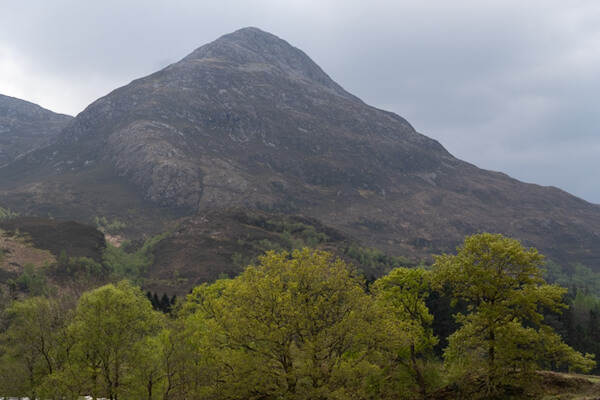
It is even cheeky of Scottish Tourism to advertise this route as a scenic route, because large sections of it are in terrible condition: potholes and broken road shoulders, tar patches and waves.
I am quite used to narrow and sometimes poor roads with left-hand traffic, but this was too much. I see two options for Scottish tourism: either completely renovate the NC500 and expand it to two lanes, or, better yet, stop advertising it altogether!
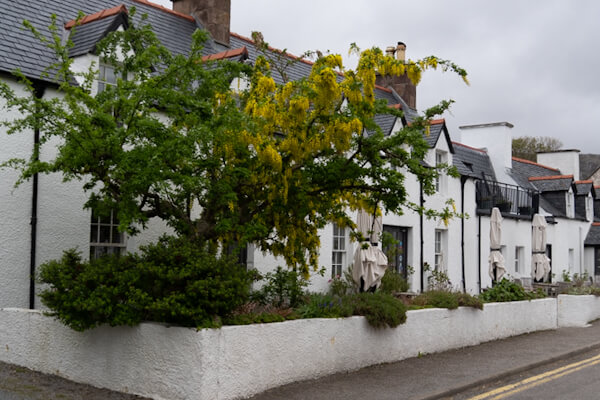
Renovation would be the preferable option, as the landscapes in the far north-west of Scotland are very wild and very beautiful. At least for those who love the north, like us.
And so swearing and amazement, happiness and frustration constantly alternate: the route takes you over rugged mountains, through rugged valleys and past small and large lakes. There are high cliffs and long sandy beaches and small and larger woods that wrest a little fertility from the rocky soil.
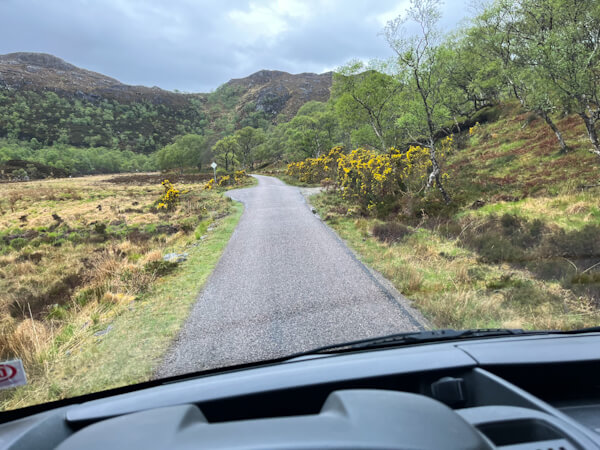
Wind-swept pines line the roadside, and birches and alders accompany the moors, whose ferns and heather do not yet really contribute to the colours of the landscape in early summer.
Monotonous shades of green dominate, especially on the mountain passes, while on the milder coasts, broom blooms yellow and fresh green covers the woods.
The next bend reveals a rocky stretch of coastline with small offshore islets, little more than boulders in the sea.
What a landscape! No, what a multitude of diverse, wild and beautiful landscapes!!!
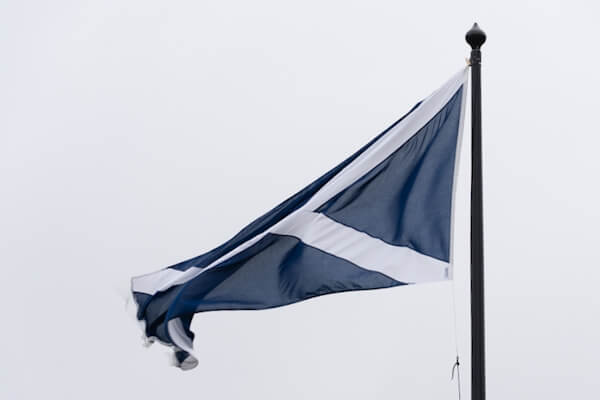
About the North Coast 500
What exactly is the NC500 – and where is it? It refers to a round trip of approximately 500 miles around the north-western tip of Scotland.
The start and finish are in Inverness. From there, take the A9 towards John o’ Groats, the northernmost point of Scotland.
Then follow the A838 coastal road west to Durness and turn south.
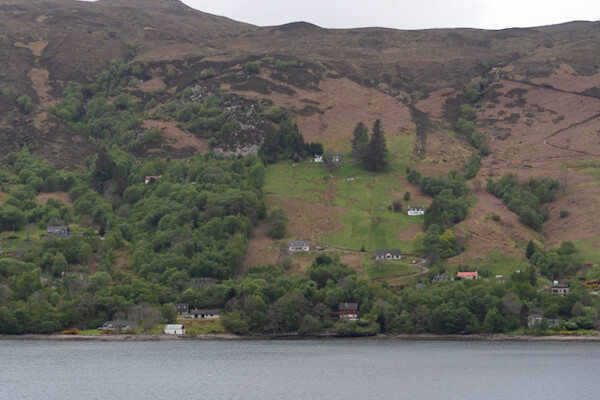
Follow the west coast on the A838, A837 and A835 in numerous loops to Ullapool. Some of the route runs along the coast, but there are also longer stretches through the mountains.
From Ullapool, take the A835 back to Inverness. Of course, you can also drive the route in the opposite direction.
The connection from Inverness to Ullapool is very well developed, as are the roads from Inverness to Thurso. Between Thurso and Bettyhill, the road is often narrow, but at least it is two lanes.
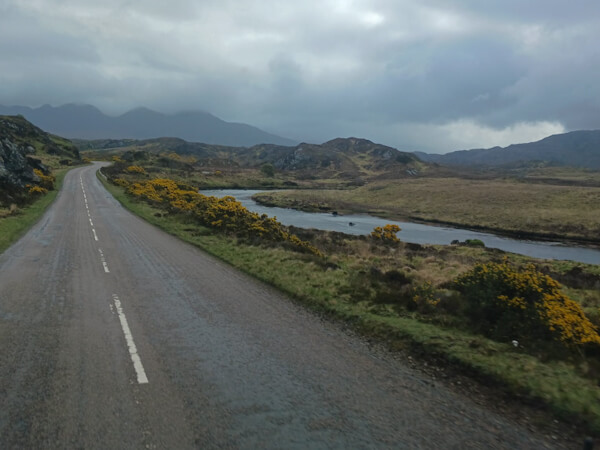
The really difficult part of the route is between Bettyhill on the north-west coast and Ullapool on the west coast. This section may not look very long on the map, but the journey takes a long time due to the poor road conditions (often single lane and in poor condition).
There are also not many petrol stations in the north-west, so you should set off on this section with a full tank.
If you are travelling by motorhome, you can alternatively drive from Inverness to Ullapool and back again and do the same with a trip to the north coast to John o’ Groats or to Bettyhill.
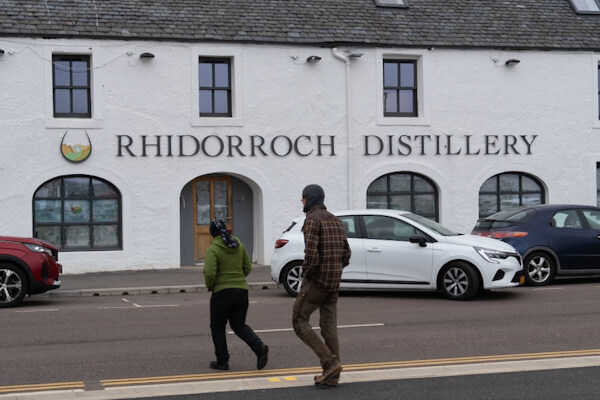
Then you won’t be doing a loop, but you’ll still see a lot of the countryside and can drive in a relaxed manner.
You can definitely do the round trip by motorbike or car, but allow much more time than Google Maps or your satnav would have you believe.
If you want to drive the whole route at a reasonably relaxed pace, four days is not too long. See also: https://www.northcoast500.com.
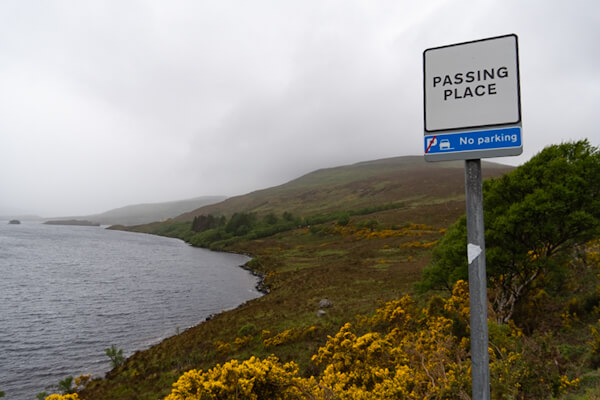
Why might the NC500 be of interest to you? It is not a major tourist route. You won’t encounter busloads of tourists here, and the population density in north-west Scotland is very low.
The main attraction here is the landscape, which is particularly remote, unspoilt, barren and wild in the far north-west of Scotland. If you like wild Nordic landscapes, this is the place for you. If not, then the NC500 is not necessarily for you.
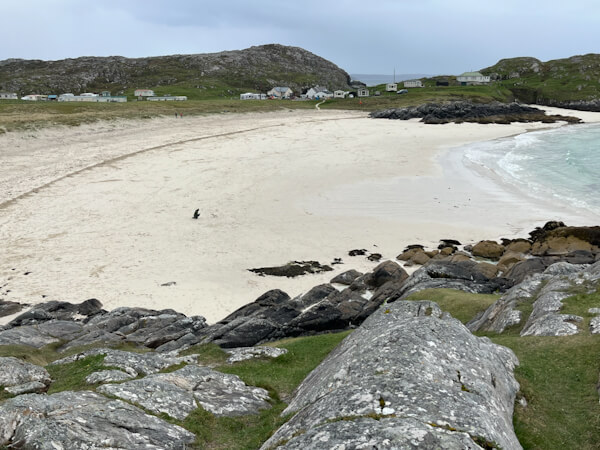
The small town of Ullapool
I haven’t even mentioned Ullapool yet: Ullapool is cool!
We stopped off in Ullapool for lunch and took a stroll around the town, especially along the harbour.
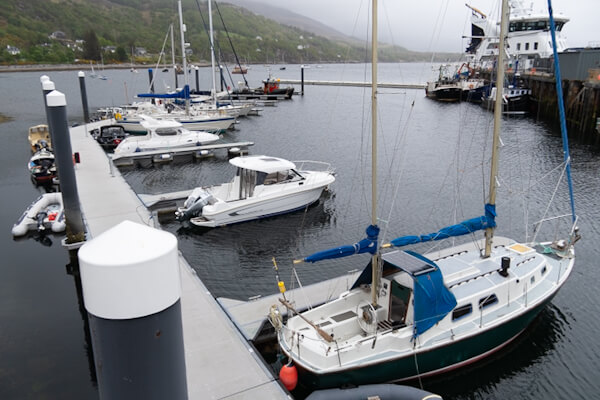
The harbour is not that small and is the departure point for ferries to Stornoway on Lewis, an island in the Outer Hebrides. There is also a lot of fishing here, and there are plenty of pleasure boats, motorboats and sailing yachts moored at the jetty.
The old harbour warehouses and small whitewashed cottages on the waterfront reveal the origins of this small town: Ullapool was founded in 1788 as a harbour for herring fishing.
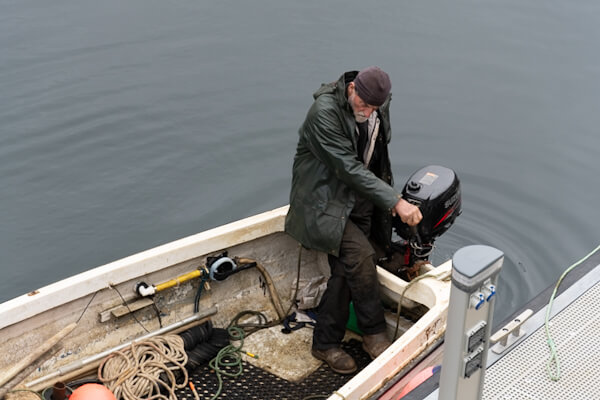
You can learn more about this in the small Ullapool Museum, which is housed in a small old church.
Tourists often stop here on the NC500 to travel to the Outer Hebrides, or to hike or climb one of the surrounding mountains.
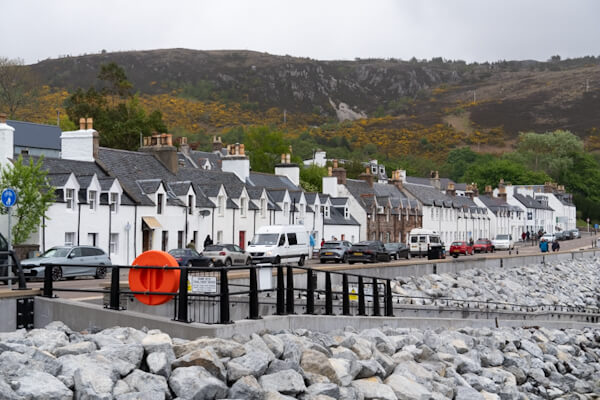
There is a campsite and several hotels, B&Bs, restaurants, cafés, supermarkets and shops, making Ullapool an ideal place to stay overnight.
The small town is nice to see and visit, and many of the buildings are pretty little white cottages. See also: https://www.visitscotland.com/info/towns-villages/ullapool.
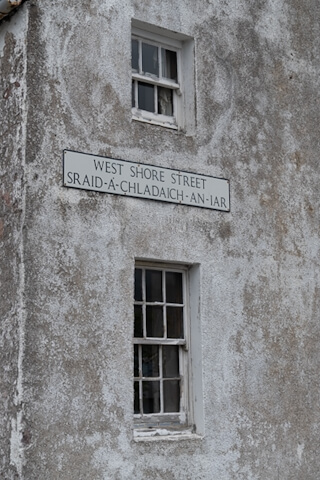
Conclusion
If you love the rugged north, you will find many beautiful landscapes on the NC500: wonderful cliffs and beaches on the north coast and wild, barren, rugged mountains in the west. Ullapool is a nice stop on your journey, as is Inverness.
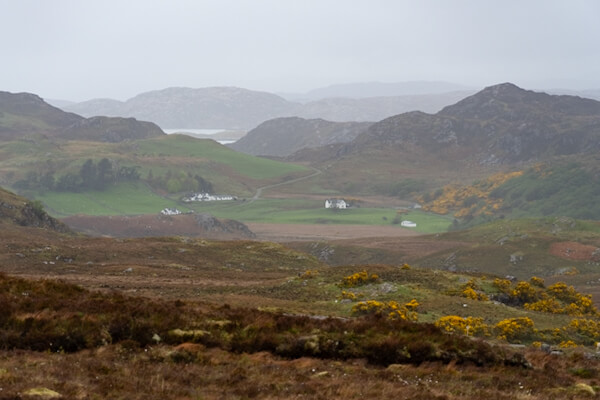
I have been unusually clear in this article about the road conditions, especially on the west side of the NC500. Plan accordingly and you won’t be unpleasantly surprised.
If you don’t have enough time for the whole trip, you can simply take a side trip from Inverness to the north coast or Ullapool, which is also beautiful and can be quickly and easily incorporated into your travel plans.
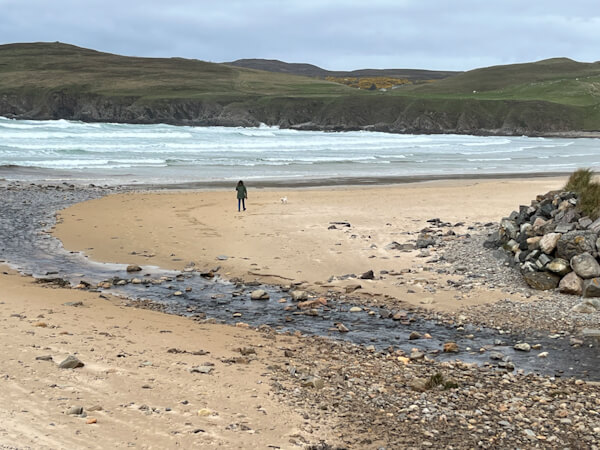
More interesting articles for you
CANALS, LOCKS AND MONSTERS: FORT AUGUSTUS AND THE LOCH NESS
ETERNAL FORTRESS: BAMBURGH CASTLE IN NORTHUMBERLAND
ACROSS THE CAIRNGORMS NATIONAL PARK AND THROUGH ROYAL DEESIDE
Image credit cover photo: At Achmelvich Beach (Photo: Ulrich Knüppel-Gertberg)